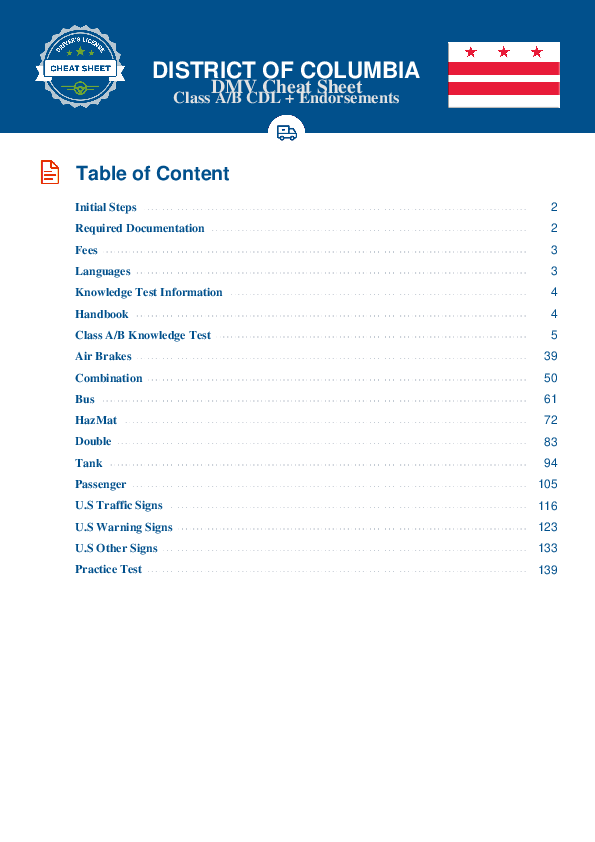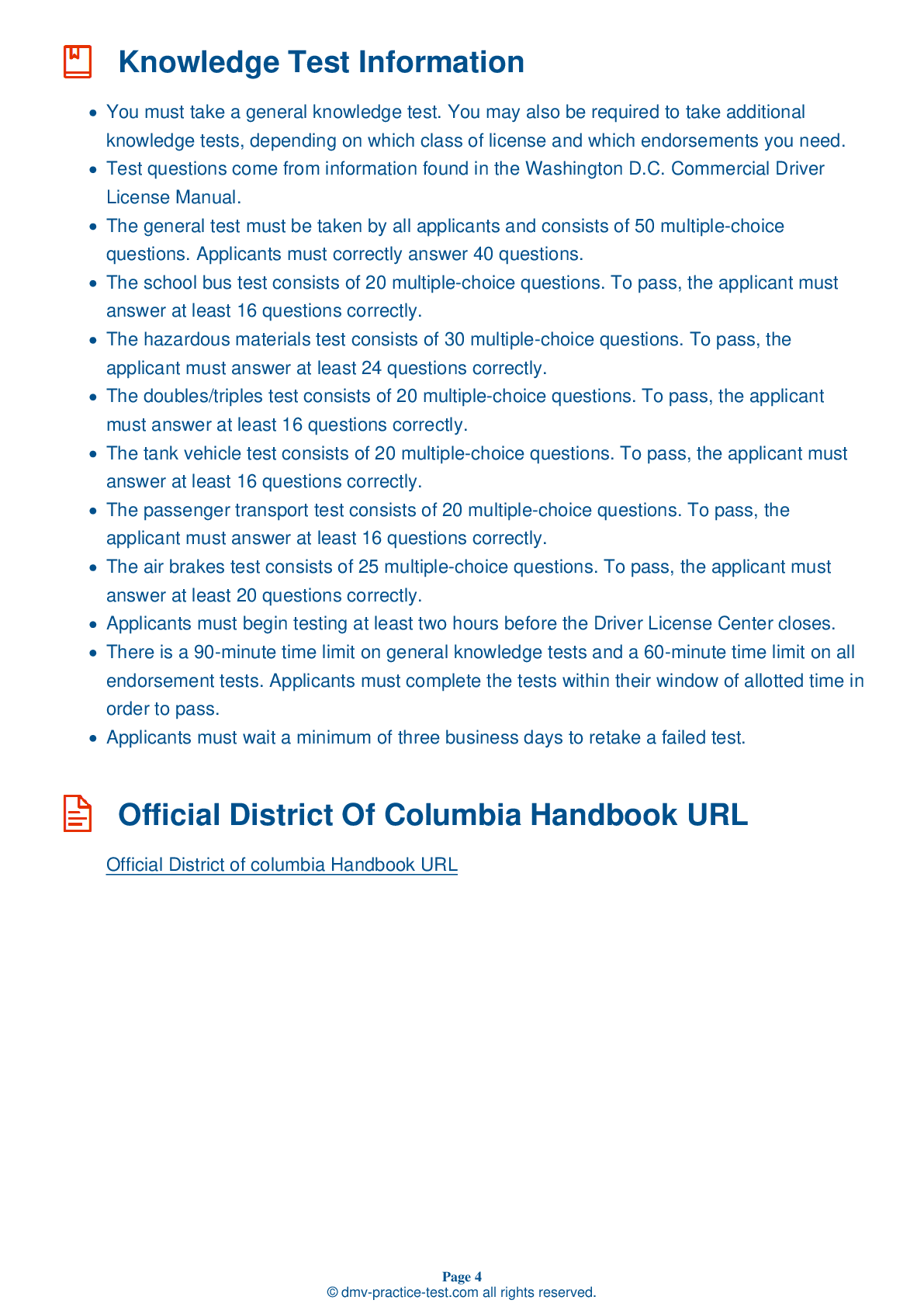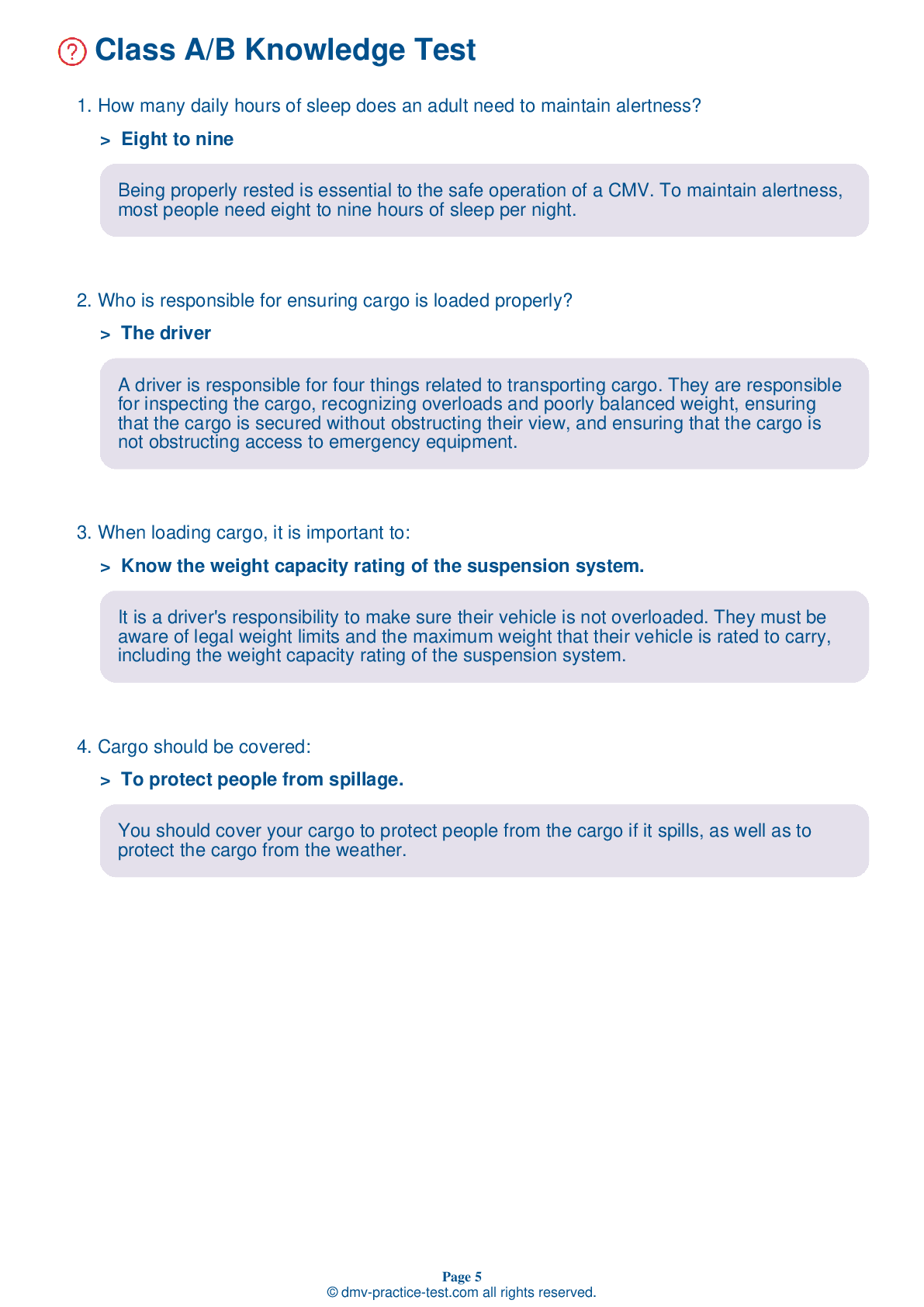Bus #2
Bus Driver Testing | District Of Columbia 2025 #2 Page 3 of 3
Train for FREE online with our DC bus CDL test. The official exam test consists of several obligatory parts, with all of them checking your knowledge of different blocks of road rules. If you need to obtain a license in District Of Columbia in 2025, learn how to become a bus driver and then practice as much as possible. Free sample tests published on our website will help you check and improve your knowledge and boost your grades. Please bear in mind that DMV requirements for a bus driver may vary from state to state.
20
16
20
15 . About how many seconds in advance of a bus stop should warning lights be activated?
45 seconds
If a school bus is equipped with alternating amber warning lights, they must be activated at least 200 feet, or about five to ten seconds, before the stop.
16 . If equipped, a header board should:
Light up when the engine is started.
When checking a header board during the vehicle inspection test, you should ensure that it is secure, free of damage, and strong enough to contain cargo.
17 . Crossover mirrors help a school bus driver see:
Vehicles in front of the bus.
Crossover mirrors are used to help a driver see the danger zone area directly in front of a school bus, as well as the danger zone areas to the left and right sides of the bus, including the area from the front of the bus to the service door.
18 . What do outside crossover mirrors allow a driver to see?
The left side of the bus
Crossover mirrors are used to help a school bus driver see the danger zone area directly in front of the bus, as well as the danger zone areas to the left and right sides of the bus, including the area from the front of the bus to the service door.
19 . If your vehicle is equipped with a cargo lift, you should ensure that:
The lift is the proper color.
When checking a cargo lift as part of your vehicle inspection test, you should check for leaking, damaged, or missing parts. The lift must be fully retracted and latched securely.
20 . Properly adjusted outside convex mirrors should allow the driver to see:
The top of the bus.
On a school bus, outside convex mirrors should be adjusted to allow the driver to see at least one traffic lane on either side of the bus, the entire side of the bus up to the mirror mounts, and where the front of each rear tire touches the ground.
2025 District Of Columbia | Frequently Asked Questions
In the District of Columbia, a CDL Class A license allows the holder to operate any combination of vehicles with a Gross Combination Weight Rating (GCWR) of 26,001 pounds or more, provided the Gross Vehicle Weight Rating (GVWR) of the vehicle(s) being towed is over 10,000 pounds. This includes tractor-trailers, truck and trailer combinations, and flatbeds.
A Class A CDL license in the District of Columbia permits the holder to operate various types of larger, heavier commercial vehicles. This includes tractor-trailers, truck and trailer combinations, tank vehicles, livestock carriers, and flatbeds. The vehicles can have a Gross Combination Weight Rating (GCWR) of 26,001 pounds or more if the towed vehicle is over 10,000 pounds.
To obtain a Class A CDL license in the District of Columbia, you must be at least 21 years old, possess a valid non-commercial driver's license, pass a vision test, and provide proof of residency and identity. You'll also need to pass written knowledge tests, obtain a Commercial Learner's Permit (CLP), and successfully complete a skills and road test.
In the District of Columbia, you must be at least 21 years old to qualify for a Class A Commercial Driver's License (CDL). This age requirement is consistent across all states and is set by federal regulation. This allows for interstate operation of commercial vehicles. For intrastate (within the same state), the minimum age can be 18.
Specific endorsements are not required for a Class A CDL license but they can provide additional driving privileges. These include endorsements for operating vehicles like school buses, passenger vehicles, tank vehicles, and vehicles carrying hazardous materials. Each endorsement requires passing specific knowledge and skills tests.
The Class A CDL skills test in the District of Columbia consists of three parts: the vehicle inspection test, the basic control skills test, and the road test. The vehicle inspection test involves checking the vehicle's safety components, the basic control skills test assesses your ability to maneuver and control the vehicle, and the road test evaluates your on-road driving skills.
Yes, limitations can be imposed on Class A CDL license holders in the form of restrictions. These are based on the driver's abilities or the type of vehicle they tested in. For example, if a driver takes the skills test in an automatic transmission truck, they will have an 'E' restriction, limiting them to automatic transmission vehicles only.
Yes, it is possible to take the written Class A CDL test in languages other than English in the District of Columbia. However, the Federal Motor Carrier Safety Administration requires all CDL holders to read and speak English sufficiently to converse with the general public, understand highway traffic signs and signals, respond to official inquiries and make entries on reports and records.
Yes, you can request accommodations for the Class A CDL written test in the District of Columbia due to disability. The DMV is committed to providing accessible services and accommodations to individuals with disabilities. You should contact the DMV directly in advance of your test to discuss your needs and the potential accommodations available.
If you don't pass the Class A CDL written test in the District of Columbia, you are allowed to retake it. However, you must wait three days before retaking the test. If you fail the test three times, you must wait 90 days before taking it again. There's also a retesting fee that applies each time.



